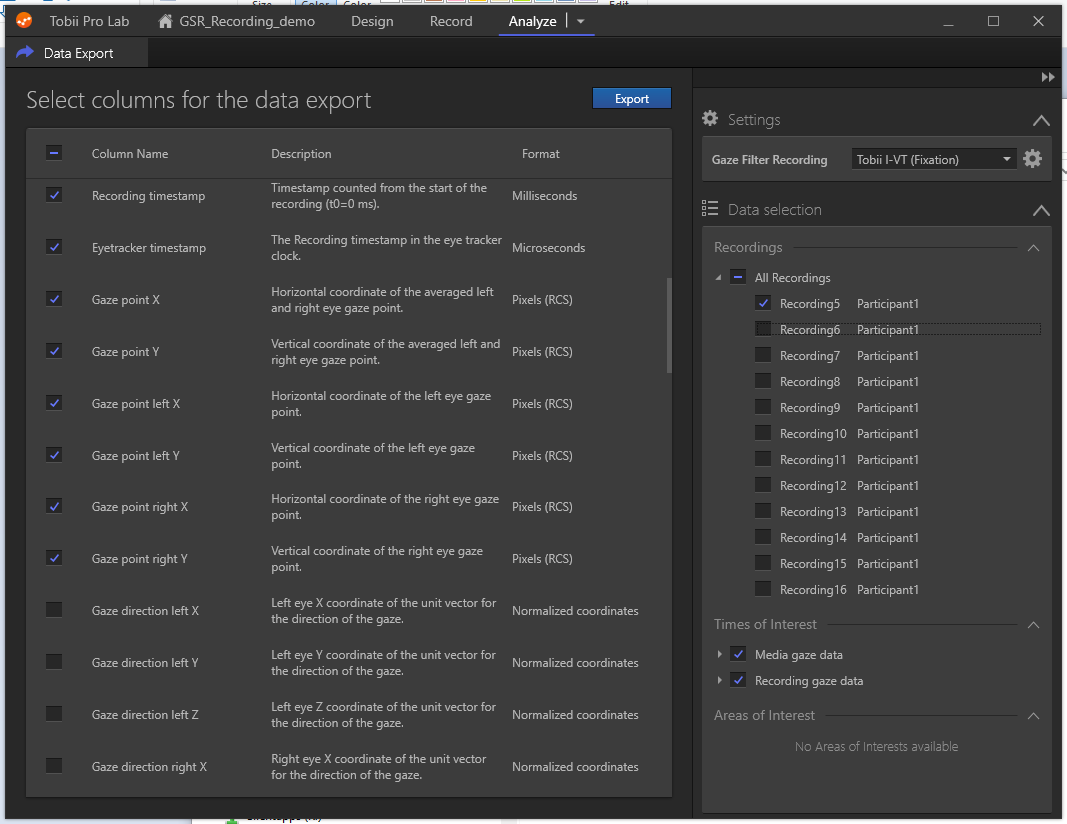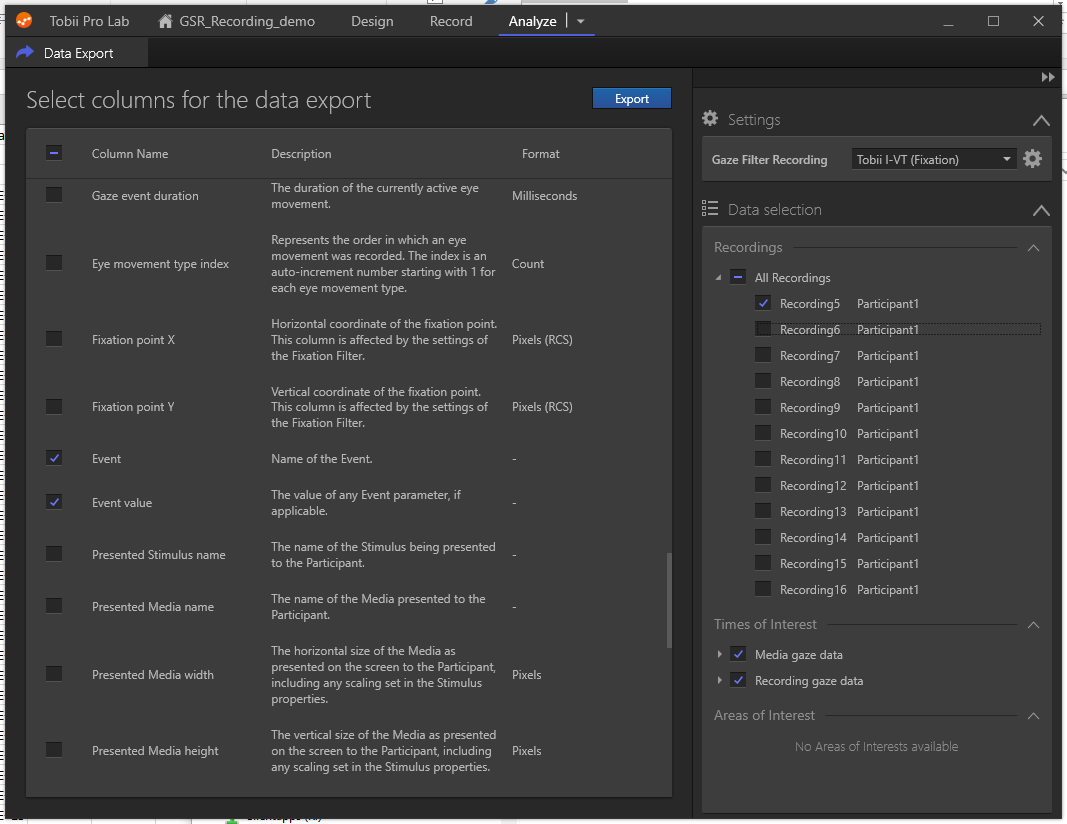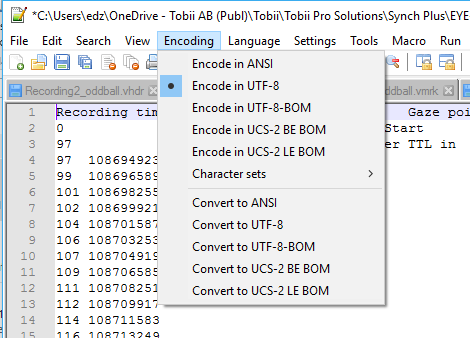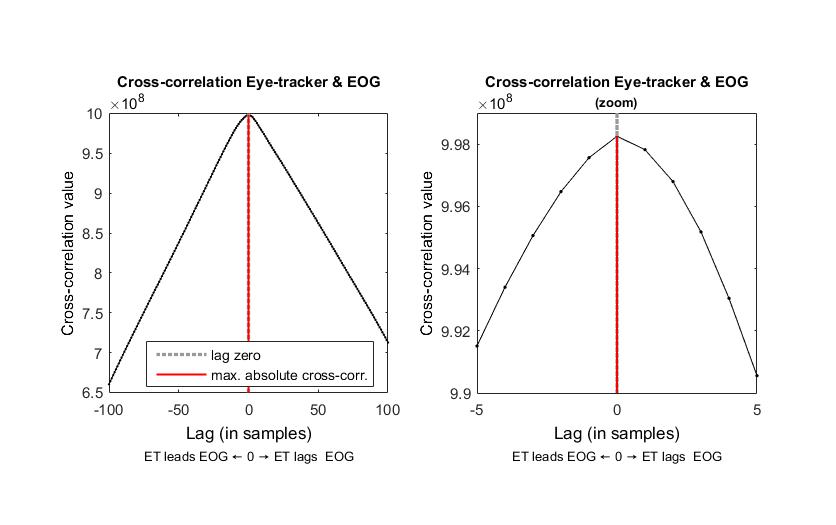EYE-EEG: Tutorial for Tobii Pro Users


EYE-EEG now also supports current Tobii Pro eye trackers. Infos for users of these systems and a timing test are found below. For more detailed instructions, please contact the Tobii Pro support.
Eye tracking data recorded and exported using Tobii Pro Lab should be directly compatible with EYE-EEG's import function for Tobii Pro. You can include in the export file as many eye-tracking variables as are needed for the analysis in EYE-EEG. There are, however, three variables that are mandatory to include in the data export file so the file can be read by EYE-EEG: "Eyetracker timestamp", "Recording timestamp" and "Event value". Also, make sure to export a separate .tsv file for each participant.


(save screenshots to disc to view them at full size/resolution)
Important: When exporting the text data, make sure the text export option is set to standard 8-bit encoding by selecting "Standard (UTF8, .tsv)" (see left image below). If you have encoded your data instead at 16-bit, you can use a free text editor like Notepad++ to change the encoding to 8-bit (see right image below).


(save screenshots to disc to view them at full size/resolution)
Data recorded using Tobii Pro SDK and SDK 3.0 are not directly compatible with EYE-EEG's import function, but must be formatted first according to the following specifications:
If you want to run the code below, you can download the necessary example data here.
eeglab % start EEGLAB % load EEG file EEG = pop_loadset('filename','tobii_sceneviewing_eeg.set','filepath','C:/'); % convert Tobii raw text output to MATLAB ET = parsetobii('C:/tobii_sceneviewing_eyetrack_ascii.txt','C:/tobii_sceneviewing_eyetrack_matlab.mat','MYKEYWORD'); % load and synchronize EEG & Tobii EEG = pop_importeyetracker(EEG,'C:/tobii_sceneviewing_eyetrack_matlab.mat',[100 200],[22 23],{'Gaze2d-Right.x' 'Gaze2d-Right.y'},0,1,0,1,4); % SYNCHRONIZATION RESULTS (based on shared events): % Mean abs. sync. error (estimated from "shared" events): 0.934 ms % before timing test, reject bad gaze samples with blinks (i.e. gaze pixels outside screen area) EEG = pop_rej_eyecontin(EEG,[6 7],[1 1],[1920 1080],50); % check synchronization accuracy via cross-correlation of EOG and ET EEG = pop_checksync(EEG,6,1,2,1); % chans 1 and 2 are left/right horiz. EOG % SYNCHRONIZATION RESULTS (based on cross-correlation of signals): % Maximum cross-correlation is observed at lag of 0 samples (= 0.00 ms): % --> horizontal gaze and EOG perfectly aligned in this dataset after synchronization
Below you see the results of this cross-correlation test with a TX-300 tracker and BrainProducts EEG amplifiers run at Humboldt University. The peak should be at a lag of zero samples. This is the case for this recording, suggesting that the data records are precisely synchronized. We strongly recommend EYE-EEG users to use these functions to run timing tests on their specific setup.

Instructions to process and analyze the combined EEG and eye-tracking data are found in the main EYE-EEG tutorial.